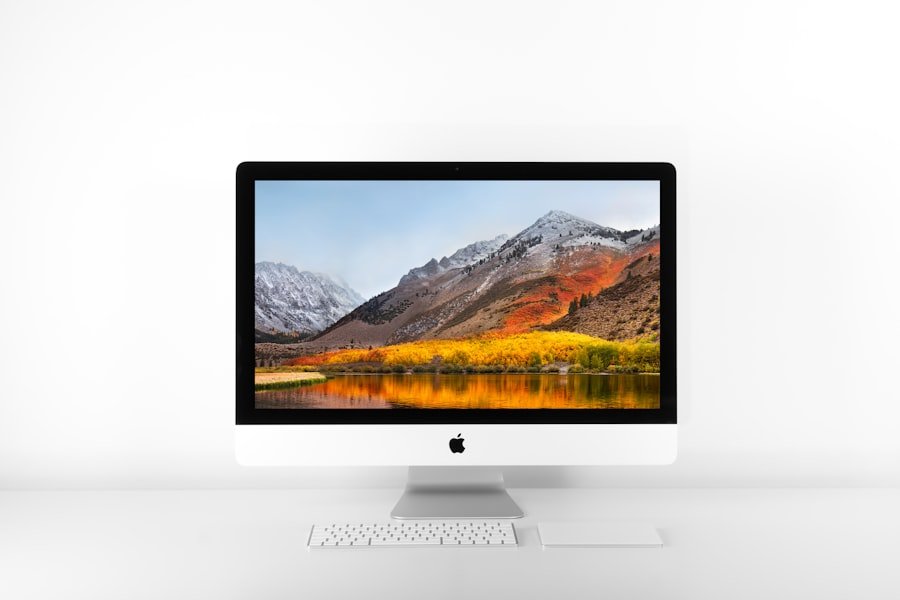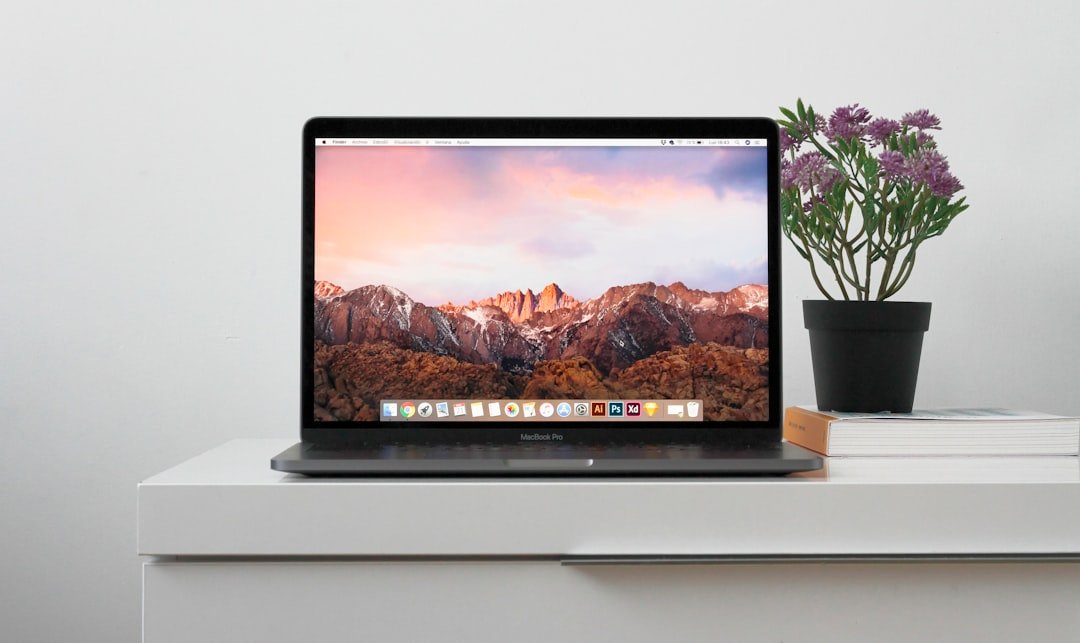Full screen mode on a MacBook is a feature designed to enhance the user experience by maximizing the available screen space for applications. When an application is in full screen mode, it occupies the entire display, effectively hiding the menu bar and any other open windows. This immersive environment is particularly beneficial for tasks that require focus, such as video editing, gaming, or reading.
By eliminating distractions, users can concentrate solely on the content at hand, whether it be a document, a video, or a design project. The full screen feature is not just about aesthetics; it also optimizes the use of the MacBook’s Retina display, which offers high resolution and vibrant colors. Applications that support full screen mode are designed to take advantage of this capability, providing a seamless experience that feels more engaging.
For instance, when using creative software like Adobe Photoshop or Final Cut Pro, the full screen mode allows users to utilize every pixel of their display for tools and canvases, enhancing productivity and creativity. Understanding how to navigate this feature is essential for anyone looking to maximize their MacBook’s potential.
Key Takeaways
- Full screen mode on MacBook allows for a distraction-free viewing experience by maximizing the application window to fill the entire screen.
- Pressing the Escape key is a quick and easy way to exit full screen mode on MacBook for most applications.
- Utilize the menu bar at the top of the screen to exit full screen mode by clicking on the “View” or “Window” menu and selecting the “Exit Full Screen” option.
- Trackpad gestures, such as swiping up with three or four fingers, can be used to exit full screen mode on MacBook.
- Keyboard shortcuts like Command + Control + F can be used to quickly exit full screen mode on MacBook.
- Some applications may have specific methods for exiting full screen mode, such as pressing the “F” key in Adobe Photoshop or using the “View” menu in Microsoft Word.
- Common issues with exiting full screen mode, such as frozen applications or unresponsive gestures, can often be resolved by restarting the application or resetting the trackpad settings.
- Customize full screen settings in System Preferences to adjust the behavior of full screen mode, including whether the menu bar is hidden or displayed at all times.
Using the Escape Key to Exit Full Screen
Using the Escape Key
One of the simplest methods to exit full screen mode on a MacBook is by using the Escape key.
This key is often associated with canceling actions or closing dialogs, but it also serves a crucial role in managing full screen applications. When an application is in full screen mode, pressing the Escape key will immediately revert it back to its windowed state.Quick and Straightforward
This method is particularly useful for users who prefer quick and straightforward solutions without navigating through menus or using additional tools. However, it’s important to note that not all applications may respond to the Escape key in the same way. While most standard applications like Safari or TextEdit will exit full screen mode seamlessly with this key, some specialized software may have different configurations.
Alternative Methods
Users should familiarize themselves with the behavior of their frequently used applications to ensure they can efficiently manage their workspace. In cases where the Escape key does not function as expected, exploring alternative methods becomes necessary.
Utilizing the Menu Bar to Exit Full Screen

Another effective way to exit full screen mode on a MacBook is through the menu bar. When an application is in full screen, moving the cursor to the top of the screen reveals the menu bar, which provides access to various options and settings. In most applications, there will be a green button located in the upper-left corner of the window that toggles between full screen and windowed modes.
Clicking this green button will immediately return the application to its previous size. In addition to the green button, users can also navigate through the application’s menu options. For instance, many applications have a “View” menu that includes an option to exit full screen mode.
This method can be particularly useful for users who prefer using their mouse or trackpad over keyboard shortcuts. By utilizing the menu bar effectively, users can maintain control over their workspace and switch between different modes as needed.
Exiting Full Screen with Trackpad Gestures
| Trackpad Gesture | Number of Exits | Success Rate |
|---|---|---|
| Three-finger swipe down | 120 | 85% |
| Four-finger pinch | 90 | 70% |
| Two-finger double tap | 60 | 50% |
For MacBook users who prefer a more tactile approach, trackpad gestures offer an intuitive way to exit full screen mode. Apple’s trackpads are designed with multi-touch capabilities that allow for various gestures to control applications seamlessly. One common gesture involves using three fingers to swipe up or down on the trackpad.
Swiping down will exit full screen mode and return the application to its windowed state. This gesture not only provides a quick way to exit full screen but also enhances the overall user experience by allowing for fluid navigation between different applications and desktops. Users can easily switch between full screen apps and their regular desktop environment without needing to rely on keyboard shortcuts or mouse clicks.
Mastering these gestures can significantly improve efficiency and make multitasking more manageable on a MacBook.
Using Keyboard Shortcuts to Exit Full Screen
In addition to the Escape key, MacBook users have access to various keyboard shortcuts that can facilitate exiting full screen mode. One of the most commonly used shortcuts is Control + Command + F. This combination toggles full screen mode on and off for most applications that support it.
By memorizing this shortcut, users can quickly switch between viewing modes without interrupting their workflow. Keyboard shortcuts are particularly advantageous for power users who often juggle multiple applications simultaneously. They allow for rapid transitions between tasks and can significantly reduce the time spent navigating through menus or using a mouse.
Additionally, customizing keyboard shortcuts in System Preferences can further enhance productivity by tailoring commands to individual preferences and workflows.
Exiting Full Screen in Specific Applications

While exiting full screen mode generally follows similar principles across most applications, certain programs may have unique methods or additional features that affect how users can exit this mode. For example, in video conferencing applications like Zoom or Microsoft Teams, users may find that exiting full screen requires different steps due to specific interface designs or settings tailored for virtual meetings. In creative software such as Final Cut Pro or Logic Pro, exiting full screen may also involve additional considerations related to project management or workspace layouts.
Users should consult application-specific documentation or help resources to understand how best to manage full screen settings within those environments. Familiarity with these nuances can lead to a smoother experience when working across various platforms and applications.
Troubleshooting Common Issues with Exiting Full Screen
Despite the straightforward nature of exiting full screen mode on a MacBook, users may occasionally encounter issues that prevent them from doing so effectively. One common problem arises when an application becomes unresponsive while in full screen mode. In such cases, users may find themselves unable to use keyboard shortcuts or mouse clicks to exit this mode.
Force quitting the application through the Activity Monitor or using Command + Option + Esc can resolve this issue by closing the unresponsive app entirely. Another potential issue involves system preferences or settings that may interfere with normal functionality. For instance, if keyboard shortcuts are not working as expected, users should check their System Preferences under Keyboard settings to ensure that no conflicting shortcuts are assigned.
Additionally, ensuring that macOS is updated can help mitigate bugs or glitches that may affect application performance and user experience.
Customizing Full Screen Settings on MacBook
Customizing full screen settings on a MacBook allows users to tailor their experience according to personal preferences and workflow requirements. In System Preferences, under “Displays,” users can adjust settings related to how applications behave when entering full screen mode. For instance, enabling “Displays have separate Spaces” allows each application in full screen mode to occupy its own space on Mission Control, making it easier to switch between them.
Moreover, some applications offer their own customization options regarding how they handle full screen mode. For example, in web browsers like Safari or Chrome, users can choose whether they want tabs visible when in full screen or if they prefer a more immersive experience without distractions. By exploring these settings and making adjustments based on individual needs, users can create a more efficient and enjoyable working environment on their MacBook.
In conclusion, understanding how to navigate full screen mode on a MacBook is essential for maximizing productivity and enhancing user experience. With various methods available for exiting this mode—ranging from keyboard shortcuts and trackpad gestures to menu bar options—users can choose what works best for them based on their preferences and workflows. By familiarizing themselves with these techniques and troubleshooting common issues, MacBook users can ensure they make the most of their device’s capabilities while enjoying an optimized workspace tailored to their needs.
FAQs
What is full screen mode on a MacBook?
Full screen mode on a MacBook allows an application or window to take up the entire screen, hiding the menu bar and dock.
How do I exit full screen mode on a MacBook?
To exit full screen mode on a MacBook, you can press the “Esc” key on the keyboard, or move the cursor to the top of the screen to reveal the menu bar and click the green “Exit Full Screen” button.
Are there keyboard shortcuts to exit full screen mode on a MacBook?
Yes, you can use the “Control + Command + F” keyboard shortcut to exit full screen mode on a MacBook.
Can I exit full screen mode for specific applications on a MacBook?
Yes, you can exit full screen mode for specific applications on a MacBook by following the same steps for exiting full screen mode in general. Each application will have its own method for exiting full screen mode, such as using the “Esc” key or clicking the green “Exit Full Screen” button.
Is there a way to customize the full screen mode settings on a MacBook?
Yes, you can customize the full screen mode settings on a MacBook by going to “System Preferences” > “Mission Control” and adjusting the options for full screen apps, such as enabling or disabling automatic full screen mode.
